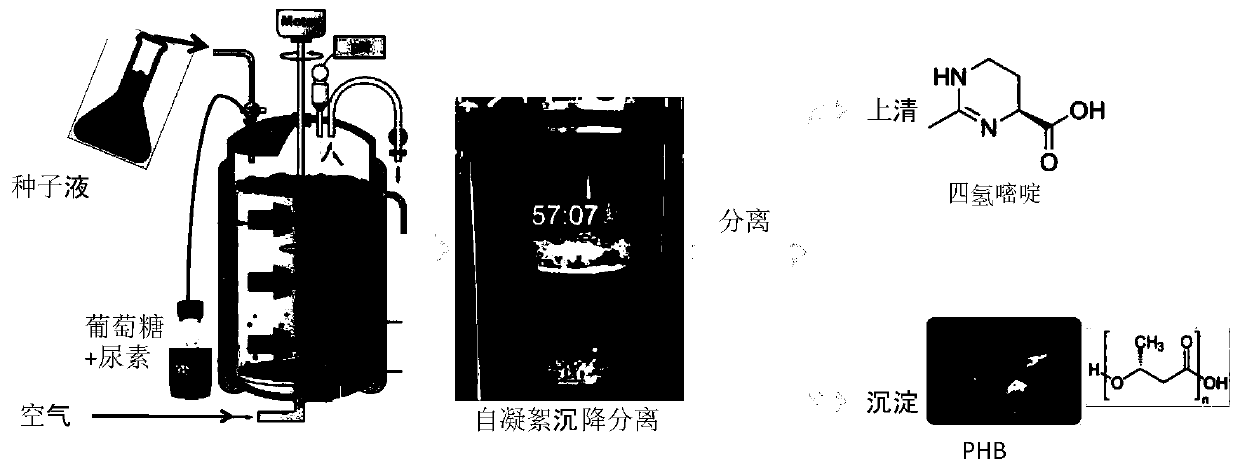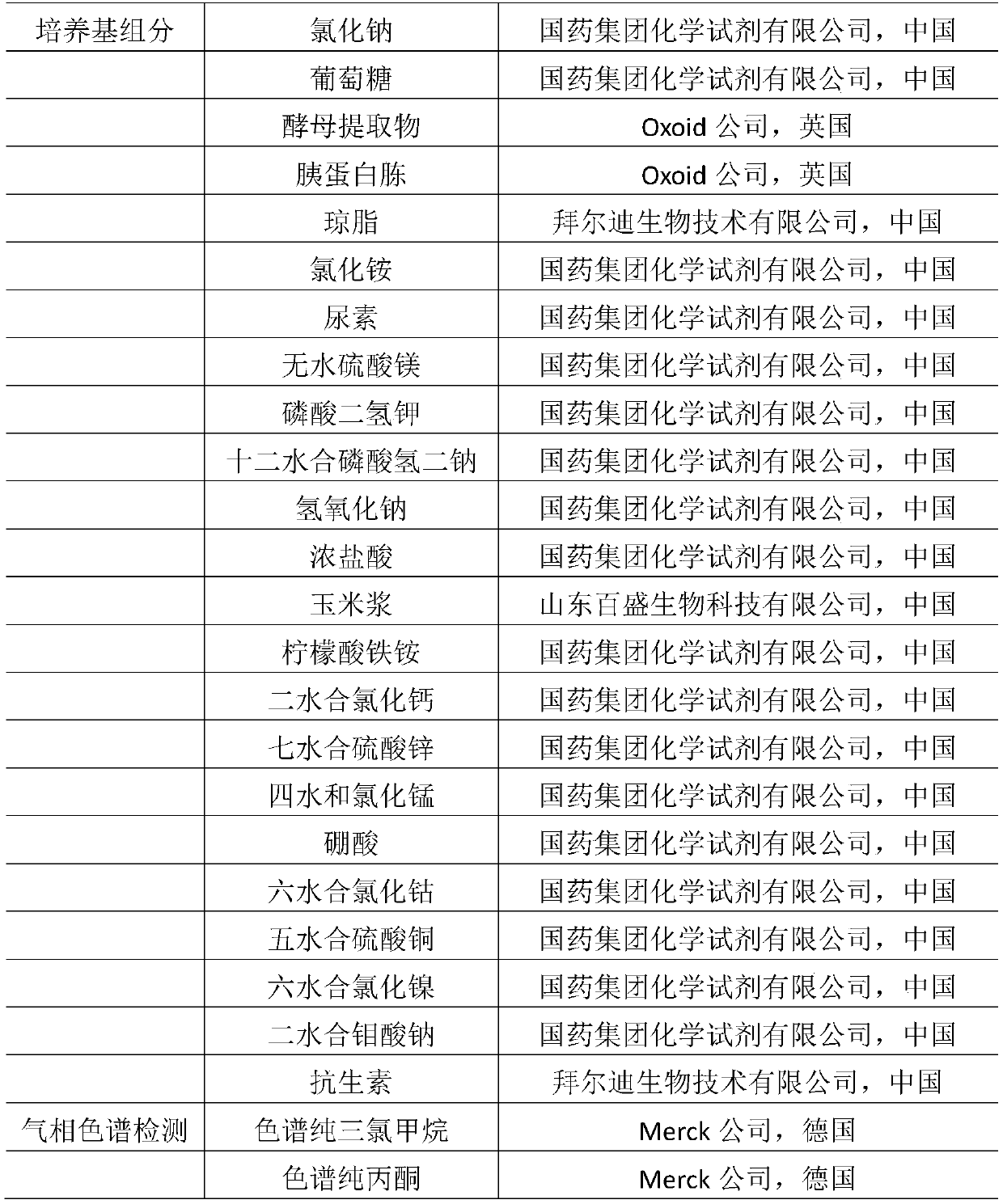Self-flocculation halomonas aydingkolgenesis M1 and application thereof
A self-flocculation, halomonas technology, applied in the direction of bacteria, the use of carriers to introduce foreign genetic material, enzymes, etc., can solve the problems of high energy consumption, low yield, and environmental pollution by waste water discharge.
- Summary
- Abstract
- Description
- Claims
- Application Information
AI Technical Summary
Problems solved by technology
Method used
Image
Examples
Embodiment 1
[0082] Example 1: Isolation and identification of strains
[0083] 1. Separation
[0084] Soil and water samples were obtained from Aiding Lake, Xinjiang Salt Lake, and the isolates were screened. Well-grown colonies were tested for PHA accumulation by Fourier transform infrared (FI-IR). Ten strains of PHA-producing halophilic bacteria were obtained, one of which was named M1.
[0085] 40-LB medium for isolation and purification of strains: sodium chloride 40g / L, peptone 10g / L, yeast powder 1g / L, pH value is about 8.5;
[0086] The medium for judging whether or not PHA can accumulate is solid mineral glucose (MM-G) medium supplemented with 2% agar.
[0087] MM-G medium:
[0088] 1 liter of MM-G medium was prepared as follows: 20 g glucose, 40 g sodium chloride, 0.5 g yeast powder, 2 g ammonium sulfate, 0.2 g magnesium sulfate, 1.5 g potassium dihydrogen phosphate, 9.65 g dodecahydrate dihydrogen phosphate Sodium, 10 ml of trace element I and 1 ml of trace element II were ...
Embodiment 2
[0104] Example 2: Production of PHB (i.e. P3HB) by non-sterile continuous fermentation using Halomonas aydingkolgenesis M1
[0105] (1) Cultivation of seed solution
[0106] Both the primary and secondary seed liquid medium are 40-LB medium, each liter of 40-LB medium is composed of: 40g sodium chloride, 10g peptone, 5g yeast powder, supplemented with distilled water to 1 liter, sterilized at 121 °C 20 minutes.
[0107] Take 20 μl of Halomonas aydingkolgenesis M1 CGMCCNO.19880 stored in a glycerol tube at -80 °C and transfer it to 20 mL of medium, and culture at 37 °C and 200 rpm overnight to obtain a first-class seed culture solution. The first-level seed culture solution was inserted into a 500mL conical flask equipped with 100mL of culture medium according to 5% of the inoculum, and connected 3 bottles (about 300mL in total), and cultivated at 37 ° C and 200 rpm for about 12 hours to obtain a second-level seed culture. liquid.
[0108] (2) Fermentation process and contro...
Embodiment 3
[0126] Example 3: Using Halomonas aydingkolgenesis M1 as a chassis cell to construct a recombinant bacterium capable of producing P3HB4HB, and using the recombinant bacterium to produce P3HB4HB through non-sterile continuous fermentation
[0127] (1) Construction of recombinant bacteria Halomonas aydingkolgenesis M1-orfZ
[0128] orfZ is the gene encoding 4-hydroxybutyryl-CoA transferase from the chromosome of Clostridium krusei. The function of 4-hydroxybutyryl-CoA transferase is to catalyze the conversion of 4-hydroxybutyrate to 4-hydroxybutyryl-CoA. 4-Hydroxybutyric acid can be obtained from the carbon source substrate by hydrolysis of γ-butyrolactone, and 4-Hydroxybutyryl-CoA can be polymerized into a polymer of 4-Hydroxybutyric acid under the catalysis of PHA polymerase, Including P4HB homopolymer, P(3HB-co-4HB) copolymer, etc. Therefore, it is expected that the Halomonas aydingkolgenesis M1 recombinant strain that can normally express the exogenous orfZ gene has the ab...
PUM
 Login to View More
Login to View More Abstract
Description
Claims
Application Information
 Login to View More
Login to View More - R&D
- Intellectual Property
- Life Sciences
- Materials
- Tech Scout
- Unparalleled Data Quality
- Higher Quality Content
- 60% Fewer Hallucinations
Browse by: Latest US Patents, China's latest patents, Technical Efficacy Thesaurus, Application Domain, Technology Topic, Popular Technical Reports.
© 2025 PatSnap. All rights reserved.Legal|Privacy policy|Modern Slavery Act Transparency Statement|Sitemap|About US| Contact US: help@patsnap.com



